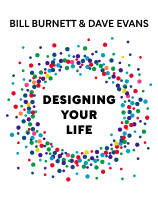

This article is an excerpt from the Shortform book guide to "Designing Your Life" by Bill Burnett and Dave Evans. Shortform has the world's best summaries and analyses of books you should be reading.
Like this article? Sign up for a free trial here .
Do you know how to reframe thoughts—especially about problems and failures? How can you use this to design your life?
When you apply a design approach to life, you learn to reframe thoughts. By reframing problems, you shift your focus to the right thing. By reframing failures, you see them as growth opportunities. This practice is crucial to moving in the right direction in life.
Keep reading to learn about reframing thoughts.
Reframing Thoughts
One of the most important aspects of the design approach is to pivot or reframe thoughts. This is when you take new information and restate your point of view in a different way that leads to new thinking and prototyping. In the world of commerce, an example might be starting out thinking that you’re designing a new product but then realizing that you’re actually redesigning the experience of that product, such as Starbucks did for coffee.
Like many people, you may wrongly believe there’s one “perfect” life for you. Reframing this defective belief involves the realization that there are many possible versions of yourself, that none of them is better than all the others, and that your life is about growth and evolution instead of reaching some final, static destination. Life design reframes the old question “What do you want to be when you grow up?” and asks instead, “What do you want to grow into?”
Other defective beliefs to reframe include:
Defective belief: Your college degree determines your career.
- Corrected belief: Three-quarters of college graduates work in a field unrelated to their major.
Defective belief: Conventional “success” will make you happy.
- Corrected belief: Designing a life that works for you, personally, makes you happy.
Defective belief: You’re too late to design your best life. Your life is already set in stone. You missed your chance.
- Corrected belief: It’s never too late.
Reframing Problems that Are Entrenched
Reframing thoughts often involves reframing problems that are so tenacious, we need to recognize them as their own special category. They drag us down like an anchor and cause us trouble over long periods of time.
An entrenched problem can be solved only by reframing it. This is because we have actually created it through wrong thinking—perhaps by jumping on the first “solution” that suggested itself. This means entrenched problems are different from non-problems. A non-problem is a fact that you’ve mistaken for a problem. Because it’s a fact, it’s not actionable and can’t be “solved.” By contrast, you can solve entrenched problems by reframing thoughts.
For example, a sociology professor named Melanie tried for years to get funding for a new Institute for Social Innovation. But she found herself blocked by her college’s lack of support, and her extended period of frustration damaged her friendships and her effectiveness in the classroom. Eventually, she reframed the problem and realized that she was focused on the wrong thing. Her problem wasn’t how to raise millions of dollars for the institute. Her problem was how to positively impact her college through social innovation. The idea for an institute had just been the first thing she thought of. Realizing this, she started interviewing people on campus for thoughts on how to incorporate social innovation into campus life. The influx of new ideas eventually led to the establishment of a student dorm that was themed for social innovation, with Melanie as its faculty advisor.
Reframing Failure
Here’s a practical method of reframing specific failures to convert them into growth opportunities.
First, keep a failure log. Write down your failures. Pick any time frame for them: yesterday, last week, this year. Where and how have you failed?
Second, organize your failures into categories.
- Screw-ups: These are just simple mistakes. Acknowledge them, apologize if necessary, and move on.
- Weaknesses: These are failures due to your long-term negative tendencies that you know all too well. Do you procrastinate? Are you forgetful? You’re unlikely to change such things, though you’re free to try. A better strategy is simply to: A) work intelligently to manage them, or B) avoid situations that trigger them.
- Growth opportunities: These are failures that don’t have to happen next time because they have an identifiable cause and solution. They lead to Step Three.
Third, recognize insights for growth. Notice which failures offer opportunities to learn and improve. Identify what went wrong. Ask yourself what you could do better next time.
For example, Dave (one of this book’s authors) kept a failure log and noted that he forgot his daughter’s birthday by a week because he was traveling (a screw-up), he scrambled to finish a required budget at the eleventh hour (a recurring procrastination-based weakness), and he angered a client during a phone meeting when he skipped preliminary conversation and dived right into the agenda. He categorized this last one as an improvement opportunity because he realized that his failure to “check in” with the client about news since their last meeting had led him to start with a now-irrelevant agenda item.
Consider using the following template for reframing your failures:
| FAILURE | Screw-up | Weakness | Improvement Opportunity | Insight |
| Missed daughter’s birthday | X | |||
| Last-minute budget | X | |||
| Phone surprise | X | Start phone calls with a check-in |
Reframing thoughts—especially about failures and entrenched problems—is critical to designing the life you want.

———End of Preview———
Like what you just read? Read the rest of the world's best book summary and analysis of Bill Burnett and Dave Evans's "Designing Your Life" at Shortform .
Here's what you'll find in our full Designing Your Life summary :
- Why finding your "true passion" in life is a myth
- The five mental attitudes in design thinking
- How to design a meaningful life in which you can truly thrive






